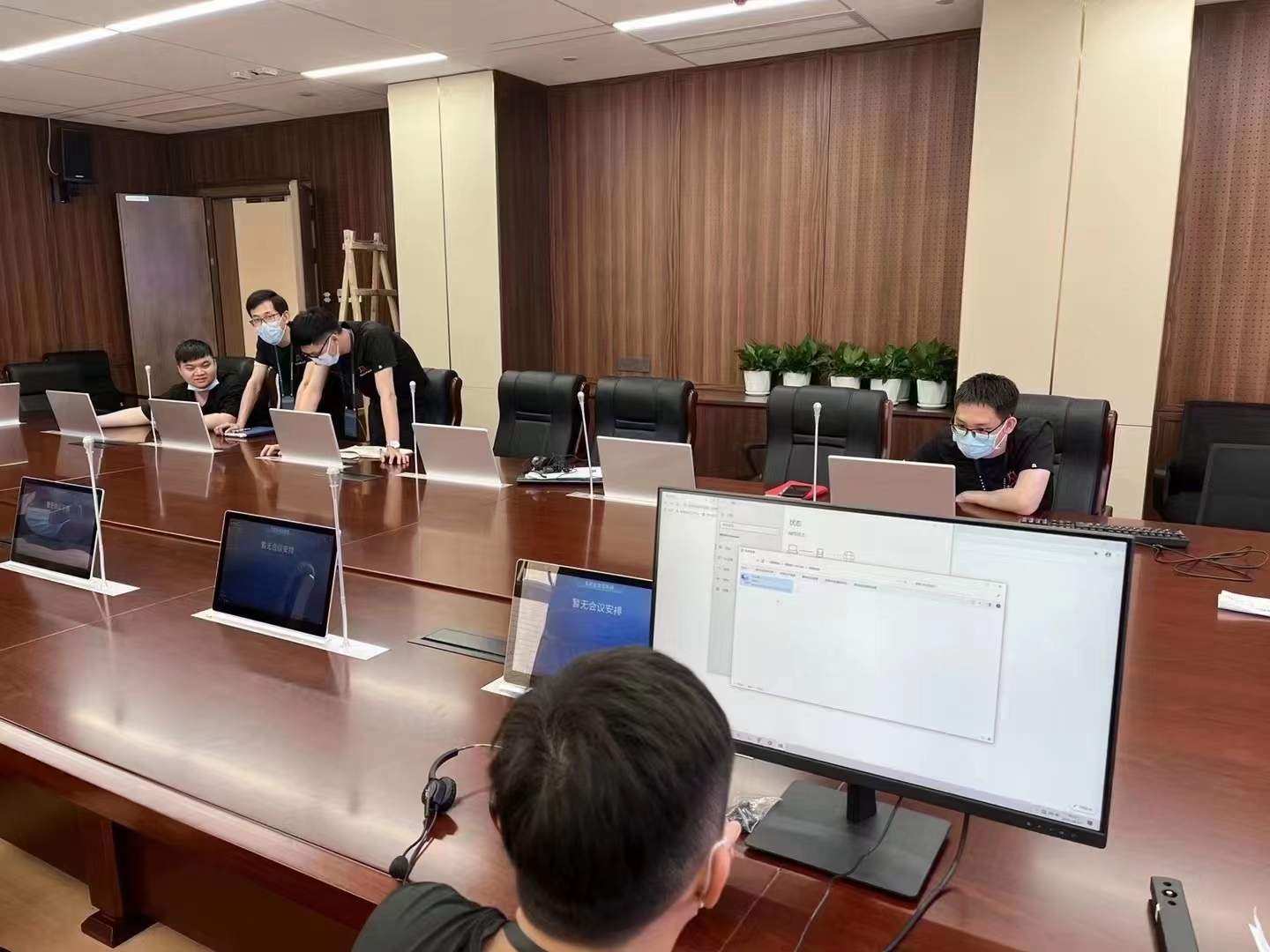

Leave a message

With the rapid development of information technology and social democratization decision-making process, people have higher and higher requirements for the efficiency and quality of conferences. High-speed computer network, computer software and hardware multimedia conference system. The most important and most basic conference audio and data transmission technology for sign-in and voting have also undergone the development process from analog to digital.

The development of the conference system has gone through three generations. The first-generation conference system adopts all-analog technology; the second-generation conference system introduces digital control technology based on the original analog technology, namely "analog audio transmission + digital control technology"; the third-generation conference system adopts all-digital technology, namely "Digital Audio Transmission + Digital Control Technology".
Among them, the second-generation and third-generation conference systems are also called digital conference systems or intelligent conference systems due to the application of digital technology, and the intelligence level of the system is significantly improved.
The first-generation conference system is a conference discussion system with full analog technology. The system structure and functions are relatively simple. The audio is transmitted and processed in the form of analog signals. Users only need to press a switch to speak. There is no intelligence in the system. The central controller is mainly suitable for small conference rooms.
The second-generation conference system introduces digital control technology on the basis of retaining audio analog transmission, and realizes functions such as speech management, voting, meeting sign-in, simultaneous interpretation and video tracking.

Due to the adoption of digital control technology, the intelligence level of the second-generation conference system has been significantly improved, and the functions of the system have become increasingly rich. These improvements have greatly improved the efficiency of the conference.
However, since the audio transmission in the system still uses the analog mode, the signal line of the conference unit must be placed separately from other equipment lines, otherwise the transmission of the analog audio signal will be distorted due to interference. It is difficult to achieve the limit of the analog audio signal; in addition, the attenuation of the analog audio signal level increases with the increase of the transmission distance, so the problem of poor sound quality of the analog audio signal when transmitted over a long distance (over 50 meters) is difficult to solve; Another disadvantage is that a dedicated audio transmission line is required to transmit each channel of voice, which results in a large number of cables that need to be laid. Operation control is also more complicated.
The above problems existing in the analog audio transmission conference system make it gradually replaced by a fully digital conference system in modern conference venues.
The third-generation conference system is an all-digital conference system, and the audio signals and control signals in the system are transmitted and processed in the form of digital signals. Its core technology is multi-channel digital audio transmission technology, that is, through the use of analog/digital (A/D) and digital/analog (D/A) conversion technologies, the audio signals collected by the conference equipment are digitized and processed. After encoding, it is transmitted on the communication line to realize the simultaneous transmission of multiple audio signals on a physical line.
.jpg)
The third-generation conference system fundamentally solves the problems of equipment interference, distorted crosstalk, and long-distance transmission signal attenuation in analog audio signal transmission. Lossless, low-noise transmission of conference audio signals with high system frequency response and fidelity. At the same time, it is easier to connect the conference system equipment through standard interfaces, which can be widely used in various types of conference rooms, large conference venues, stadiums and other occasions.
 【DSPPA Demo】PAVA8000 EN54 Voice Evacuation SystemNovember 12, 2020Abstract: DSPPA PAVA8000 EN54 Voice Evacuation SystemToday, we are gonna show you a demo about our PAVA8000 EN54 Voice Evacuation System.PAVA8000EN54 Voice Evacuation System can not only support manua...view
【DSPPA Demo】PAVA8000 EN54 Voice Evacuation SystemNovember 12, 2020Abstract: DSPPA PAVA8000 EN54 Voice Evacuation SystemToday, we are gonna show you a demo about our PAVA8000 EN54 Voice Evacuation System.PAVA8000EN54 Voice Evacuation System can not only support manua...view The National Standard Approval Meeting held in BeijingJuly 19, 2019The National Standard Approval Meeting held in BeijingThe approval meeting of the National StandardTechnical standard of public address system engineeringis held in Beijing on July 16, 2019. Xue Chang...view
The National Standard Approval Meeting held in BeijingJuly 19, 2019The National Standard Approval Meeting held in BeijingThe approval meeting of the National StandardTechnical standard of public address system engineeringis held in Beijing on July 16, 2019. Xue Chang...view